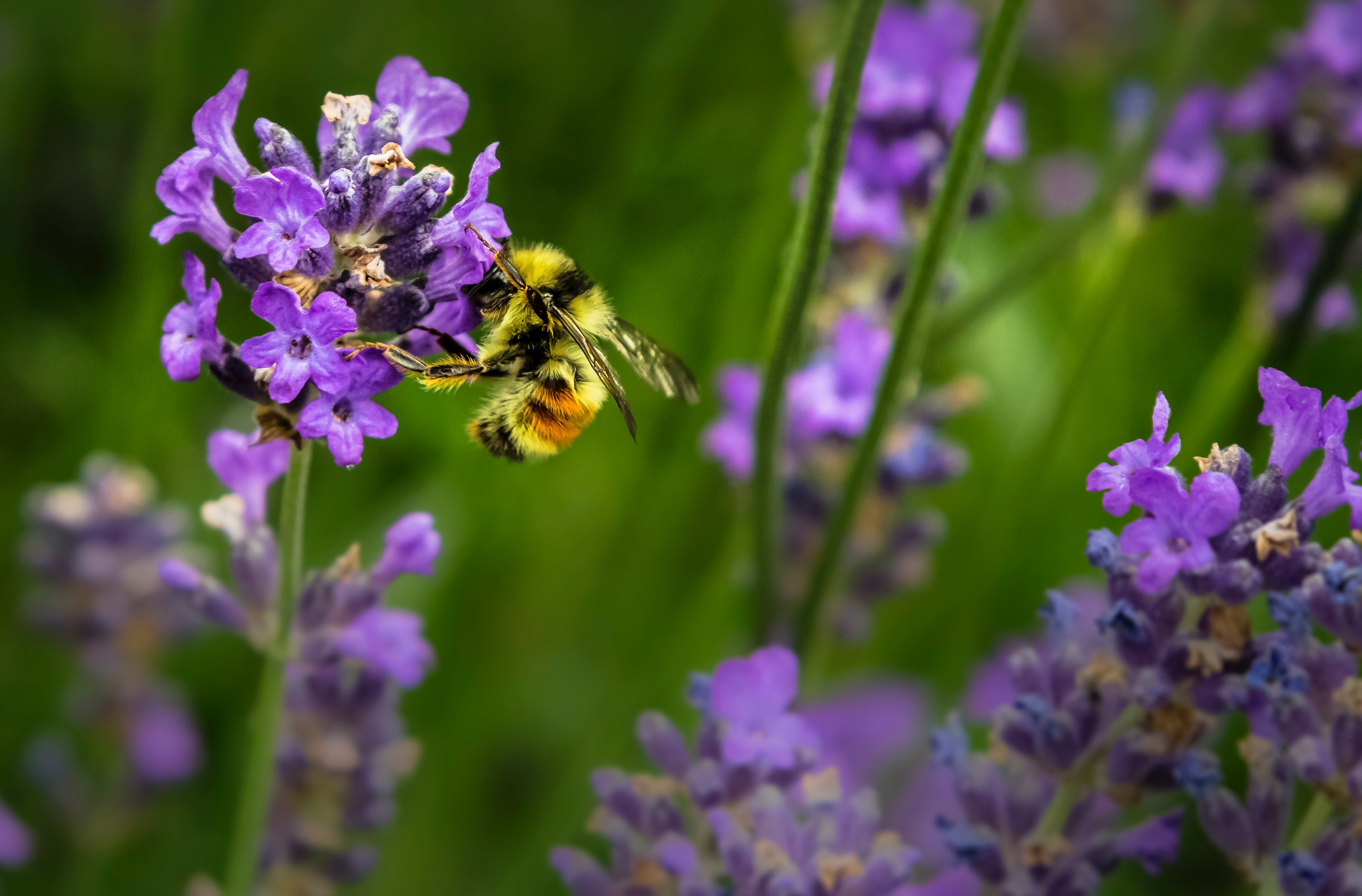
No doubt, you’ve heard about the steep decline in bee populations or the term “colony collapse.” Did you know that pollinators, in general, are struggling, and we’ve got a bee in our bonnet about it! A push is on to support the pollinators.
It affects all of us. Flower and plant pollination are important not only for your business but for our planet. It’s estimated that one-third to two-thirds of our food supply would be severely affected if bees were wiped out. That’s something we can all commit to doing something about.
So, how can you do that? As landscapers and local garden centers, you can influence customers and design to improve and create habitats that harbor these essential workers in the food chain.
If you have a passion for the planet, here are some helpful tips to support the pollinators:
Less Lawn, More Gardens
When working with your customers, encourage less lawn and more gardens. Lawns have their place but are a wasteland for pollinators. Besides, they require a tremendous amount of labor, water, fertilizers, fungicides, etc. to maintain. Smaller well-placed patches of lush green grass can be very effective visually, especially when set beside beautiful flowering landscapes, such as butterfly gardens.
Plant Diversity
Pollinators thrive on a wide array of blooms. Different colors and shapes attract different pollinators. For instance, butterflies like bright flowers, including red and purple, but bees prefer bright white, yellow, or blue flowers. Planting to insure blooms from early spring to late fall, incorporating native plants, and making sure to add compost and organic mulch will create the perfect habitat for pollinators of all types.
Offering a wide variety of native plants and seeds can help. One specific plant to use and stock is milkweed. This is the only plant that monarch caterpillars will use as a host. It is critical for their survival. It is also important to accept a certain amount of plant damage in your landscapes. Placing known host plants that may suffer leaf damage in less visible positions within the garden is one way to deal with this “problem.”
Say No to Pesticides
Many believe that the decline in pollinator populations and particularly bee colony collapse is due to the use of pesticides and herbicides. Help clients to greatly reduce the use of these toxic substances. Find natural alternatives if necessary. One way to combat insect damage is to introduce more insects. For example, ladybugs and praying mantis will help control destructive aphids and beetles. Keep them in stock for your customers.
Create Sanctuaries for the Pollinators
They need a place to hide, reproduce, and hibernate. A well-designed garden will make all of that possible. Layering different height plants, trees, and bushes, providing host plants such as milkweed, plenty of sun, and a clean water source will help them thrive. You can even incorporate bee skeps, snags (dead tree trunks), or bee boxes for bees to live in. There are over 4,000 varieties of bees, and most do not form hives.
Many garden centers are taking the lead by offering classes, equipment, plants, seeds, and design/install services that promote pollinators. Some are even partnering with local beekeepers to promote their honey and expertise. Supporting the pollinators will have your garden center and clients’ landscapes looking great. It will not only be good for your business but also the environment.
So, make a beeline to get ready for the spring planting season with all the products and knowledge you will need to make a difference.
